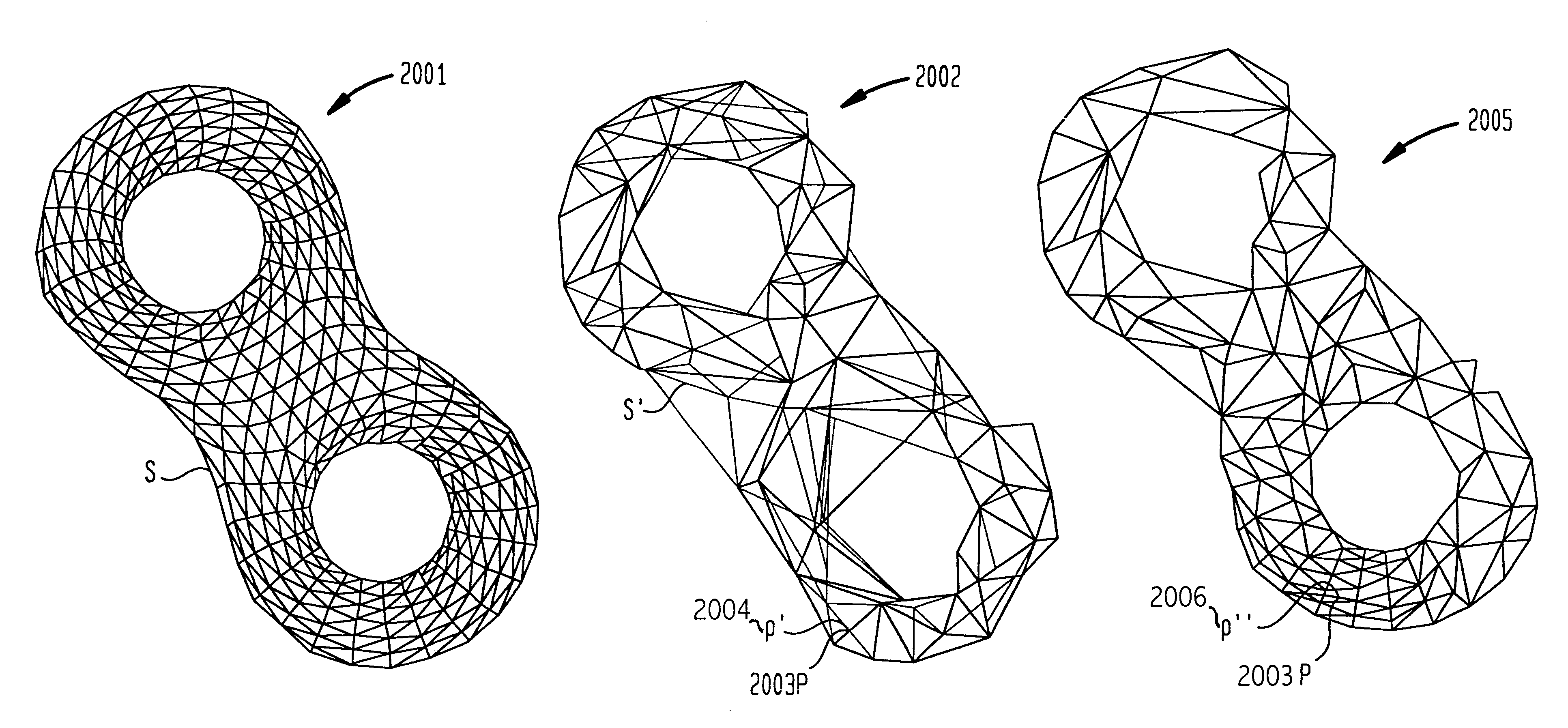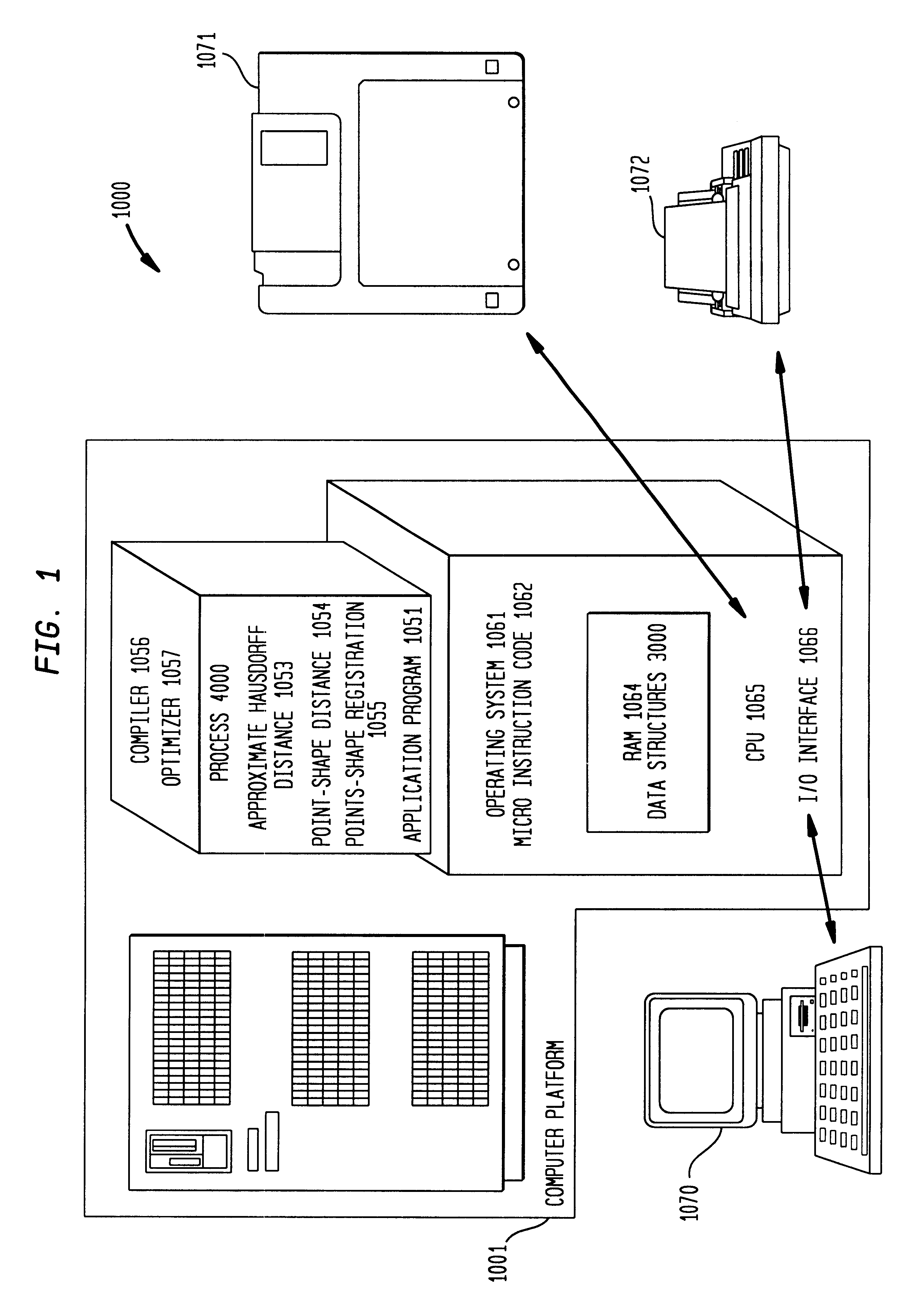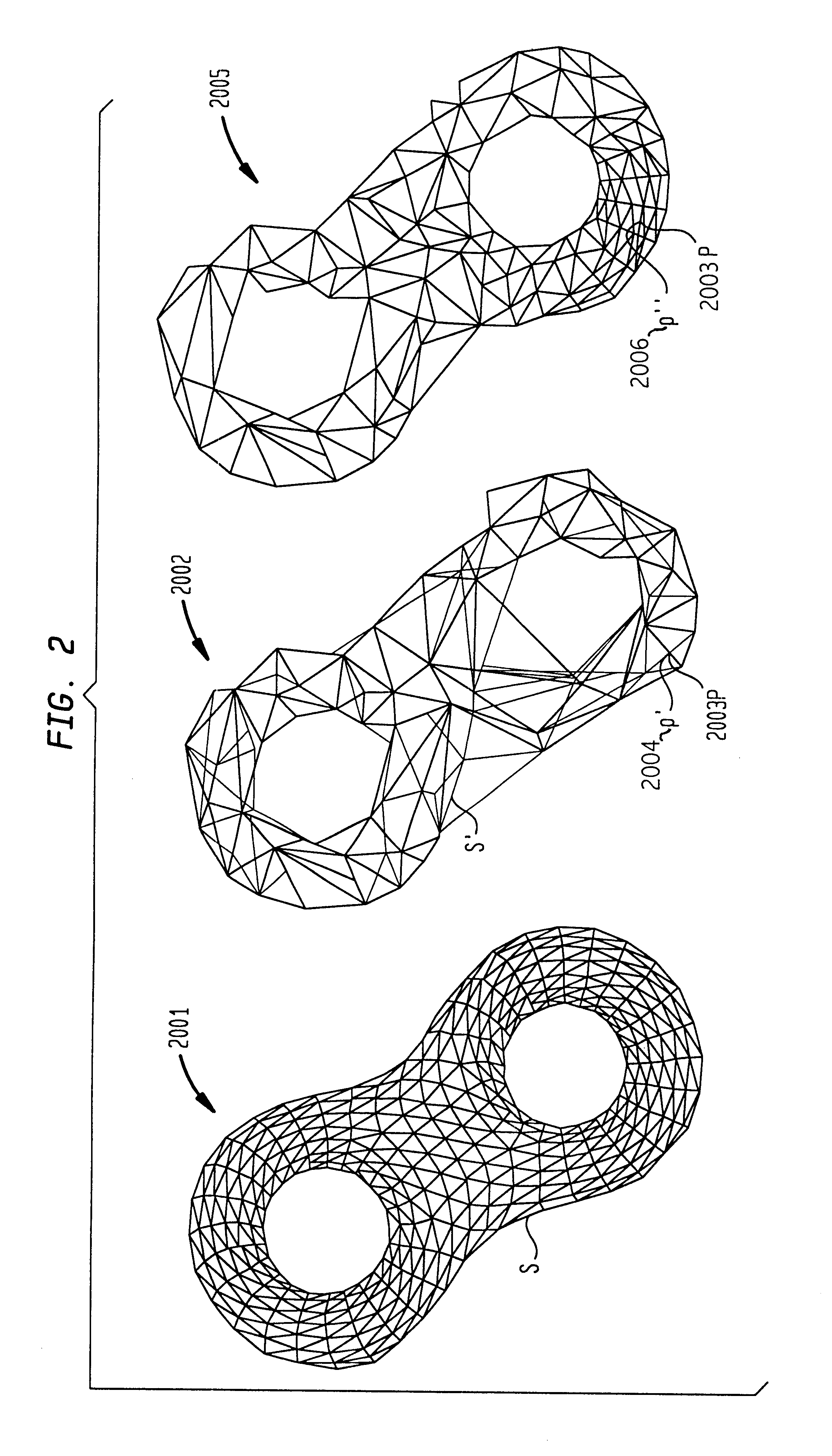System and method for finding the distance from a moving query point to the closest point on one or more convex or non-convex shapes
a technology of convex or non-convex shapes and distances, applied in image analysis, data processing applications, instruments, etc., can solve problems such as failure to provide a satisfactory solution and high cost of operations
- Summary
- Abstract
- Description
- Claims
- Application Information
AI Technical Summary
Benefits of technology
Problems solved by technology
Method used
Image
Examples
Embodiment Construction
:
FIG. 1 is a block diagram of one preferred embodiment of the present computer system 1000. The preferred embodiment includes one or more application programs 1051. One type of application program is a compiler 1056 which includes an optimizer 1057. The compiler 1056 and optimizer 1057 are configured to transform a source program into optimized executable code. The compiler 1056 and optimizer 1057 operate on a computer platform 1001. Some application programs 1051 that run on the computer system 1000 include, according to the present invention, a computer program 1054 computing a point to shape distance, a computer program 1053 computing an approximate Hausdorff distance, and a process 4000 of solving a closest point query.
The computer platform 1001 includes one or more central processing units (CPU) 1065, a random access memory (RAM) 1064, and an input / output interface 1066. Micro-instruction code 1062, for instance a reduced instruction set, may also be included on the platform 10...
PUM
 Login to View More
Login to View More Abstract
Description
Claims
Application Information
 Login to View More
Login to View More - R&D
- Intellectual Property
- Life Sciences
- Materials
- Tech Scout
- Unparalleled Data Quality
- Higher Quality Content
- 60% Fewer Hallucinations
Browse by: Latest US Patents, China's latest patents, Technical Efficacy Thesaurus, Application Domain, Technology Topic, Popular Technical Reports.
© 2025 PatSnap. All rights reserved.Legal|Privacy policy|Modern Slavery Act Transparency Statement|Sitemap|About US| Contact US: help@patsnap.com



